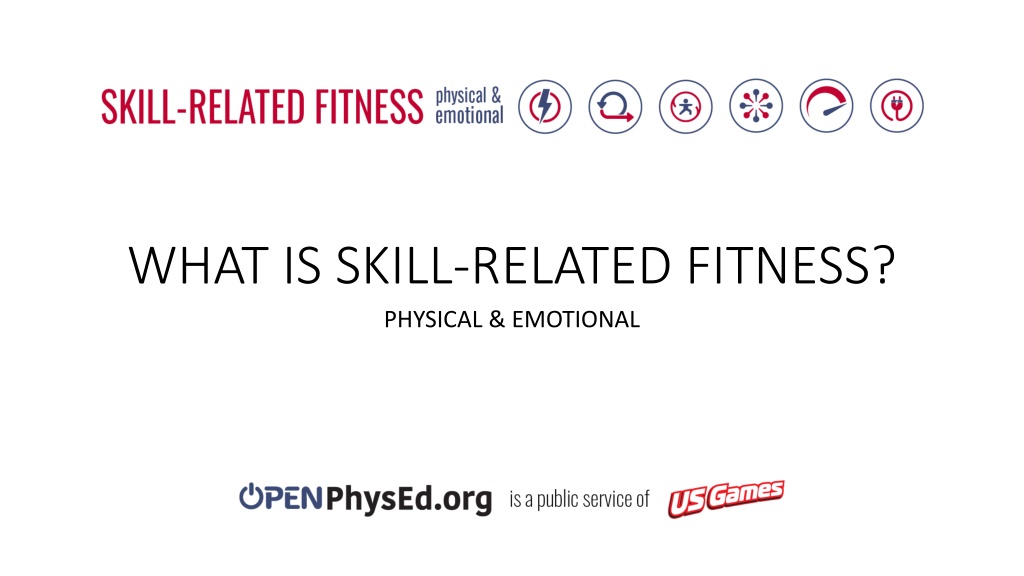Understanding Skill-Related Fitness: Physical and Emotional Aspects
Skill-related fitness encompasses both physical and emotional components, such as agility, balance, coordination, power, reaction time, and speed. Physical agility involves quick body movements, while emotional agility relates to positive responses in various situations. Physical balance requires weight distribution adjustments, whereas emotional balance stabilizes responses. Physical coordination combines movements for tasks, while emotional coordination involves providing support. Physical power involves generating force, and emotional power uses emotions positively. Reaction time focuses on prompt responses, and emotional reaction time involves regulating emotions quickly. Speed pertains to quick body movement, while emotional speed boosts others' emotional states through personal enthusiasm.
Download Presentation

Please find below an Image/Link to download the presentation.
The content on the website is provided AS IS for your information and personal use only. It may not be sold, licensed, or shared on other websites without obtaining consent from the author. Download presentation by click this link. If you encounter any issues during the download, it is possible that the publisher has removed the file from their server.
E N D
Presentation Transcript
WHAT IS SKILL-RELATED FITNESS? PHYSICAL & EMOTIONAL
AGILITY AGILITY Physical Agility The ability to change body position and direction quickly and efficiently. Emotional Agility The ability to respond positively and optimistically in a variety of social and emotional situations and to regain optimism when negative events occur.
BALANCE BALANCE Physical Balance The ability to adjust the distribution of weight in order to remain upright and/or steady. Emotional Balance The ability to stabilize the emotional response to a potentially unstable social and emotional situation.
COORDINATION COORDINATION Physical Coordination The ability to combine movements of several parts for a focused purpose or task. Emotional Coordination The ability to empathize with others and respond appropriately and productively to provide social and emotional support.
POWER POWER Physical Power The ability to quickly produce maximum force. Emotional Power The ability to apply the energy created from an emotional response (e.g., anger, sadness, frustration) in a positive and constructive way.
REACTION TIME REACTION TIME Physical Reaction Time The ability to quickly and effectively respond to a stimulus through purposeful movement. Emotional Reaction Time The ability to quickly regulate an emotional response when faced with a variety of immediate social and emotional challenges.
SPEED SPEED Physical Speed The ability to move the body quickly from one point to another. Emotional Speed The ability to use personal enthusiasm to improve the emotional state of others.























